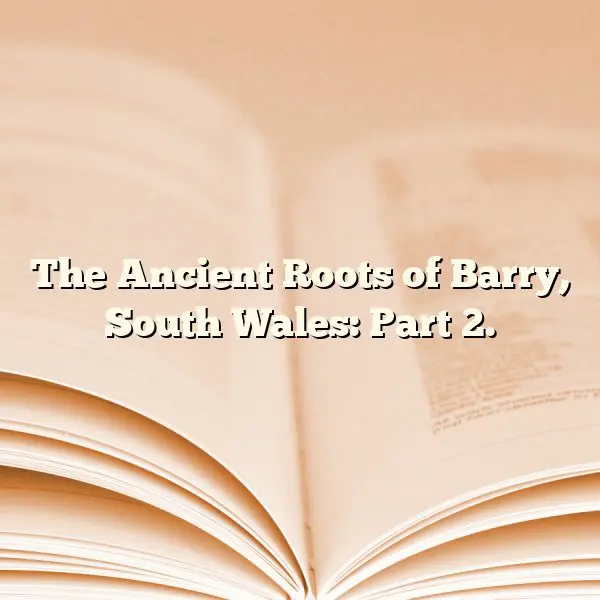In the 18th. Century evidence of Neolithic man was discovered in the form of dishes, saws, knives, flints, a scraper, a prehistoric horn celt with obscure markings, a spokeshave and some arrowheads, amongst other things. Unfortunately, although these things reside safely in the Museum of Cardiff, no one thought it worth excavating at the time and now residences stand on the sites.
An ancient Roman kitchen, complete with remains and utensils underwent a similar fate. In 1533, Leland was made the Kings Antiquary and was directed to make a tour of all places where records were held. This took him nine years and his description of the island was:
“It is about a mile in circumference and has good corn, grass and some wood, and there is no dwelling on the Island, but in the midst of it is a fair little Chapel of St. Baruch which is visited by many pilgrims. It took the name Barri from this holy man who was buried there and whose remains are yet on the Island”. (The Welsh name for Barry is Y Barri).
Vikings ravaged the coast of South Wales in the tenth century. They often took hostages from the monasteries, but they did not seem to want to live in the area. For a long tim, the island was known as the “Saints’ Retreat” or the “Island of Saints”. Afterwards, in the sixteenth century, it was inhabited by smugglers and pirates and was called the “Smugglers’ Fortress”. This became serious as it grew simultaneously with the rise of Bristol, Britain’s second largest port.
Barry Island soon became the centre of piracy and smuggling in the Bristol Channel. In 1784, the island became known as the “Fortress of Knight”. Knight was the most prolific pirate and smuggler in the channel and people were to terrified to speak out in court against him., although he was also considered a bit of a local hero. His armed ship was called ‘John O’ Combe’. He was eventually forced out to Lundy, which he also fortified. He and his successor, Arthur, returned to Barry so frequently that H.M. Customs asked the government to station a cutter in Penarth and 60 troops to Barry.
Rhoose was infamous for its wreckers and George II sent troops to break up the smugglers and wreckers. They landed at Aberthaw “the Rhoose men’s favourite landing zone, from where they could easily transport the contraband along Port Road to Cardiff, the main market for such things”. Several large caves were filled in while constructing the present day docks and it is likely that they were used by the pirates until they were moved on in about 1850.
If you are interested in Welsh corgi puppies, or Wales in general, visit our website at Welsh Products Online. This article, The Ancient Roots of Barry, South Wales: Part 2. has free reprint rights.



